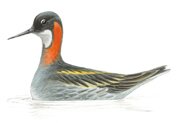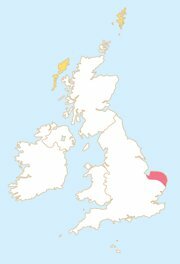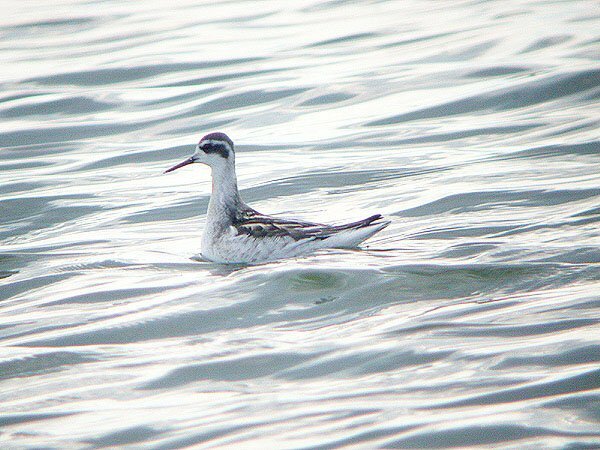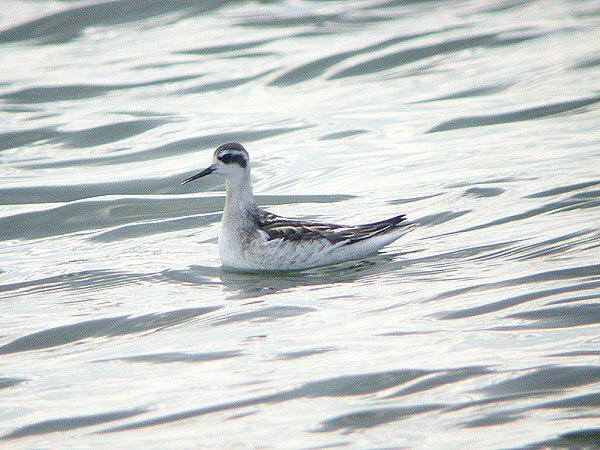Red-necked Phalarope These small, delicate waders are adapted well to spending a lot of time on water. Unlike other waders, phalaropes have lobed toes which enable them to swim strongly when on pools or out at sea. They spend most of their time in the water but can equally run about on land. The duller coloured male looks after the eggs and young after laying. As a rare UK breeding species it is a Red List bird. In the UK, breeding red-necked phalaropes are associated with marshy depressions, and small pools and watercourses with tussocky vegetation. Small numbers breed on the Western and Northern Isles of Scotland. Birds are also seen on passage in the autumn, usually along the east coast.? They arrive back at their breeding grounds in May. Females start to leave in June, with males and young departing in July and August. Best looked for on passage in August and September. The red-necked phalarope is one of the UK's rarest breeding waders and is on the southern-most edge of its range. It has always been mainly confined to the Northern and Western Isles but with a fluctuating and now extinct population in Southern Ireland. During the late 1990s numbers of breeding males appeared to be increasing in Shetland and newly created sites were being used, but since then numbers have declined, for unknown reasons. What is RSPB doing to help?
On existing sites we are implementing vegetation management and hydrological control to maintain a mosaic of emergent vegetation, tussocky sedge beds and pools of open water, both in the Northern Isles and in the Hebrides. All sites are under surveillance to protect against egg theft, both via RSPB staff and local residents.?
During 2001, only 15 males returned to Shetland. They used 7 sites but breeding was attempted at only 2 sites. In the Hebrides, 19 breeding males returned and used 2 sites but none bred. Egg collecting remains a serious threat; red-necked phalarope was ranked equal fifth in the list of bird species most at risk from egg collecting (Thomas, Elliott & Gregory in RSPB Conservation Review 13).
The last record of Red-necked Phalarope in the Southend area was in 1985. The following photographs of the Red-necked Phalarope were taken by Steve Arlow of the Southend Ornithological Group on 31st August 2003 at Paglesham Lagoon.
|
Page last updated:
Web Design Graham Mee. ? Copyright of all pages South East Essex RSPB Local Group. All images copyright of owners
The Royal Society for the Protection of Birds. Registered charity no 207076





